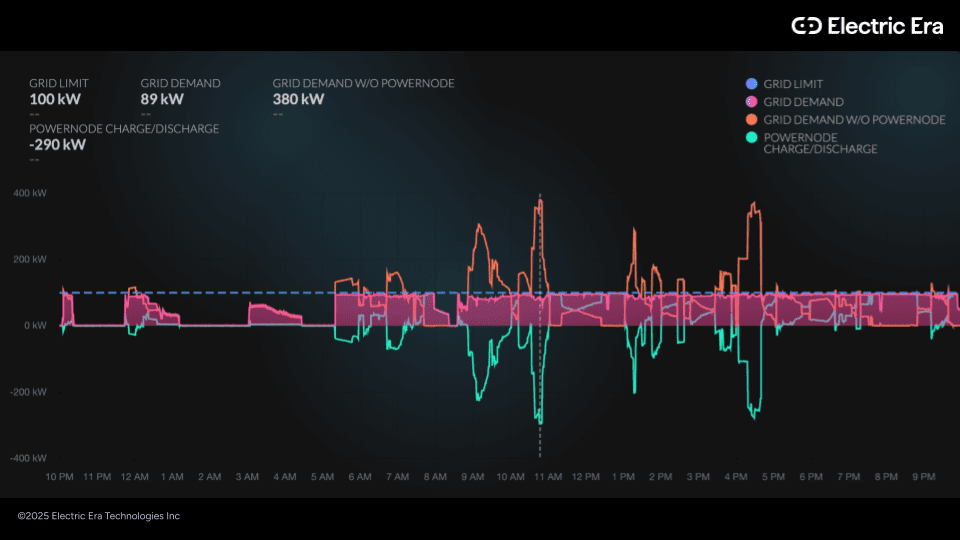Perhaps the biggest challenge in deploying DC fast charging is the large amounts of power required, especially at peak times. Power-hungry EV chargers can cost site hosts big bucks in the form of utility demand charges, and securing sufficient power for a new installation can result in delays of months or years. This is why the hottest topics in the infrastructure world are energy management and battery storage, which can flatten out peak consumption and enable operators to deliver much more charging power for a given amount of utility capacity.
Seattle-based Electric Era is focused on the rapid deployment of DC fast charging systems at retail locations through bespoke, private-label charging solutions. The charger manufacturer has developed a patented battery-buffered DC fast charger that it says can cut peak power consumption by up to 70%.
“We designed our EV chargers to significantly reduce the impact on the local energy grid,” said Electric Era CEO Quincy Lee. “The notion that the nation’s electric grid cannot handle the load of EVs is another myth that’s ready to be busted.”

The state of Washington and the Snohomish County Public Utility District (SNOPUD) chose Electric Era as the supplier for a co-funded DC fast charging installation in Arlington, Washington, in part because the company was able to install an eight-stall 200 kW charging system using existing electric infrastructure.
Using the existing utility connection not only saved money for ratepayers, it also reduced the amount of time it took for Electric Era to install the chargers (installation time was just eight months), and cut operating costs by some 70% for site developer Skycharger, by drawing power from both the battery and the grid simultaneously to cut peak demand charges.
“The project’s use of innovative battery technology made it possible to provide power to the chargers without the need for increased capacity or expensive upgrades,” utility spokesperson Aaron Swaney said.
A 2023 Distribution Grid Electrification study by the California Public Advocate’s Office estimates that the cost to expand the state’s electric grid to support EV charging could be cut in half by shifting EV charging away from peak demand times and using battery-buffered EV chargers to shave peak power loads.
“Yes, we can have lower carbon transportation, and we can also have air conditioning and cold ice cream—it doesn’t need to be an either-or proposition,” said Quincy Lee.
Source: Electric Era
